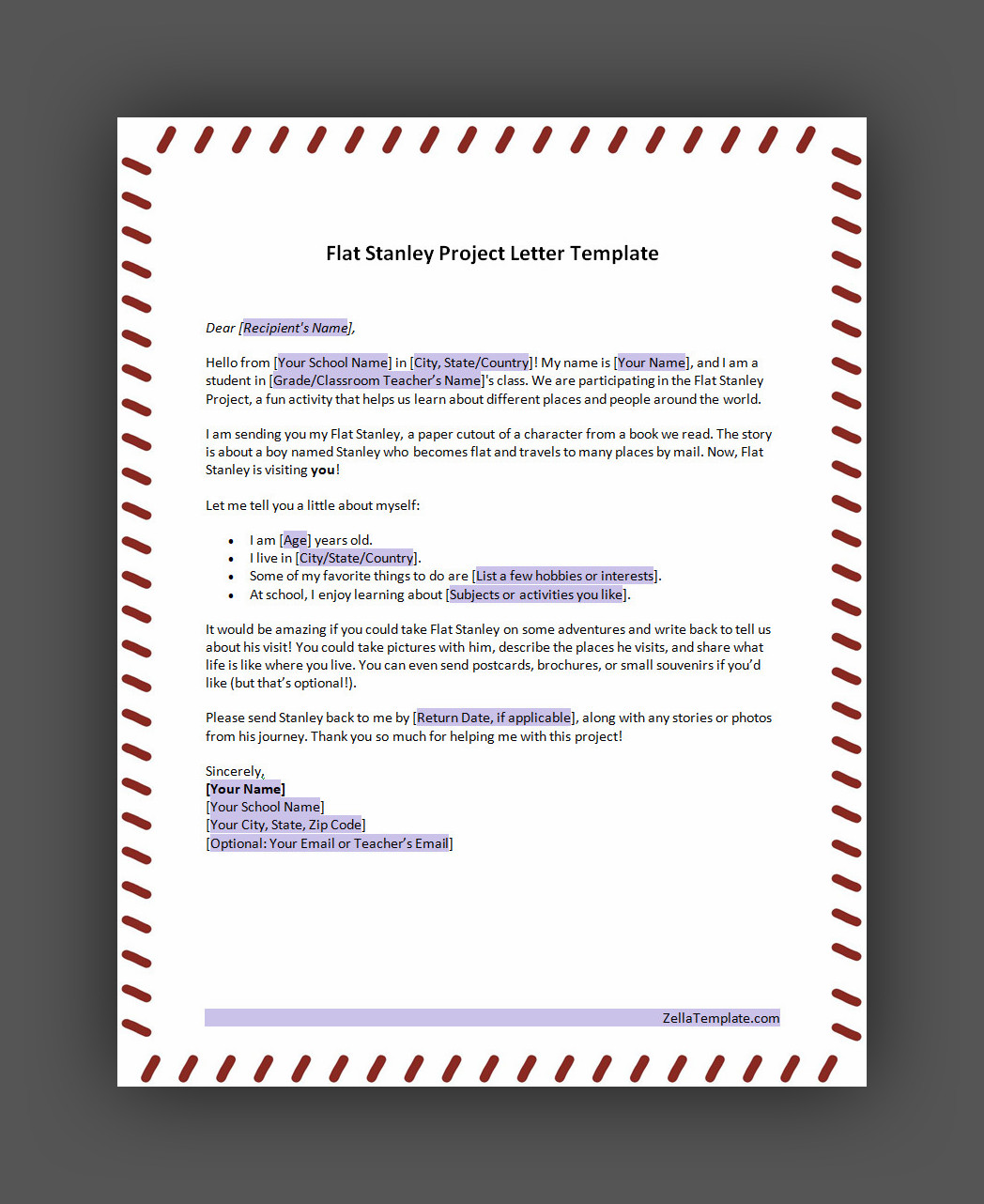The Flat Stanley project is a popular initiative designed to foster letter-writing between schoolchildren while documenting the adventures of a paper-cut-out figure named Flat Stanley as he travels around the world.
Table of Contents
The primary objective of this project is to improve reading and writing skills in children while also educating them about diverse people and cultures from various locations.
What is The Main Idea of Flat Stanley?

The main idea of Flat Stanley by Jeff Brown is that adventures can happen in unexpected ways, and being different can lead to unique opportunities.
In the story, Stanley Lambchop becomes flat after a bulletin board falls on him, but instead of being upset, he uses his new shape to go on exciting adventures, like being mailed in an envelope, helping catch art thieves, and more. The story highlights themes of creativity, problem-solving, acceptance, and making the best of unusual situations.
Flat Stanley Project for the Classroom
Implementing the Flat Stanley Project in the classroom offers a fun and educational experience that promotes creativity, cultural awareness, and global connection. Here’s a step-by-step guide for teachers to successfully run the project:
1. Introduce the Flat Stanley Project
Start by explaining who Flat Stanley is and the purpose of the project. Describe how students will create Flat Stanley figures and send them to different places to learn about geography, cultures, and communication. Spark enthusiasm and curiosity from the start.
2. Create Flat Stanley Figures
Have students create their own Flat Stanley. You can provide templates or let students design their versions. This creative activity personalizes the project and gets students invested in Stanley’s journey.
3. Send Flat Stanley on Adventures
Students mail their Flat Stanley to friends, family, or pen pals in different locations. Include a note with instructions asking recipients to take photos and write about Stanley’s visit. Teachers can help coordinate the mailing process.
4. Document the Travels
Recipients send back letters, photos, and stories about Flat Stanley’s experiences. Encourage students to keep a journal or scrapbook of their journey. This step teaches communication skills, geography, and cultural appreciation.
5. Receive Letters and Mementos
As Flat Stanley returns, students read letters and explore any items or photos that came with him. This moment builds excitement and encourages storytelling and sharing among classmates.
6. Share Stanley’s Adventures
Organize a time for students to present what Flat Stanley experienced. They can create posters, slide shows, or displays. Sharing builds confidence, presentation skills, and a sense of classroom community.
7. Reflect on the Experience
Facilitate a class discussion where students talk about what they learned, what surprised them, and what they enjoyed. Reflection helps them internalize the experience and strengthens learning outcomes.
8. Extend the Learning
Use Flat Stanley’s adventures as a springboard for additional activities:
- Write stories or essays based on his travels.
- Explore maps of where he went.
- Discuss cultural similarities and differences.
- Integrate experiences into art, language, and social studies lessons.
9. Build Global Connections
Take it a step further by connecting with classrooms in other countries. Encourage pen pal relationships, email exchanges, or virtual calls. These global friendships foster empathy and cultural awareness.
10. Celebrate the Project
Wrap up with a celebration! Host a class event where students present their projects, share stories, and showcase letters and souvenirs. Recognize their hard work and growth through certificates or small rewards.
By guiding students through the Flat Stanley Project, you create a rich, memorable learning experience that combines storytelling, global education, and personal growth.
Things To Include in Your Flat Stanley Letter
A Flat Stanley letter template is a pre-written, fill-in-the-blank style letter that students (or teachers) can use to send along with their Flat Stanley cut-out. It explains the purpose of the Flat Stanley project, introduces the student, and asks the recipient to take Flat Stanley on adventures, and then report back about his trip.
1. An Introduction
- Your child’s name, age, grade, and school.
- A short message like:
“Hi! My name is Lily and I’m in 2nd grade. I’m sending you my Flat Stanley as part of a school project!”
2. A Request for Help
- Kindly ask the recipient to take Flat Stanley on a few adventures.
“Can you take Flat Stanley with you for a few days and show him around your town or home?”
3. Ideas for Adventures
- Visiting landmarks, parks, museums, or schools.
- Going grocery shopping, walking a pet, attending events, etc.
4. Photo Opportunities
- Encourage the recipient to take a few pictures with Flat Stanley in different places.
5. Write Back About the Trip
- Ask them to write a letter or email telling what Flat Stanley did, where he went, and who he met.
- They can also include postcards, maps, brochures, or souvenirs if they’d like.
6. Return Instructions
- Include a return envelope (with address and postage) if needed.
- Or let them know when and how to return Flat Stanley.
7. Thank You!
- A polite thank-you note for your participation and assistance with the school project.
Flat Stanley Letter Template
A Flat Stanley letter adds a personal and engaging touch to this beloved educational project, helping students connect with others while exploring geography, culture, and storytelling. A well-written letter makes the adventure more meaningful and memorable for both the sender and the recipient.
Use our free editable Flat Stanley letter template today to get started on your journey. Fun, easy to customize, and perfect for classroom activities or at-home projects—just print, personalize, and send Flat Stanley on his next adventure!
Flat Stanley Project Letter Template – Word